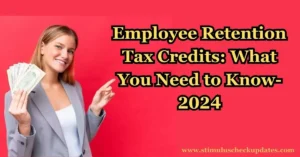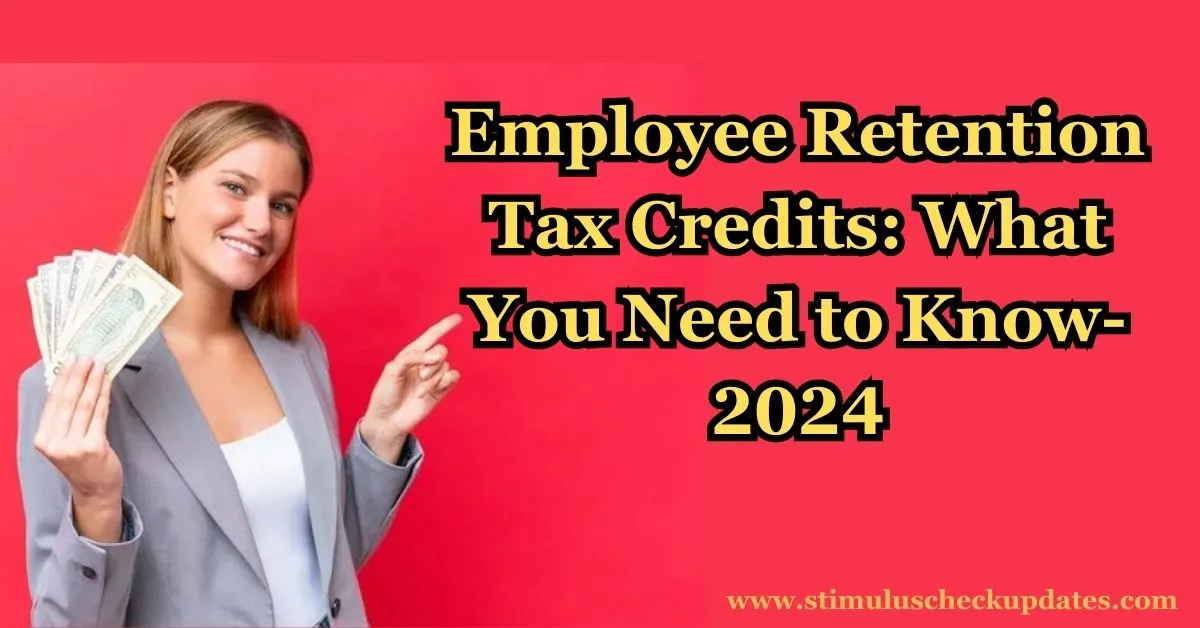The Employee Retention Credit (ERC), also known as the Employee Retention Tax Credit or ERTC, emerges as a vital lifeline for eligible businesses and tax-exempt organizations in the aftermath of the COVID-19 pandemic. This refundable tax credit, established by the federal government, is designed to provide financial assistance to entities that had employees and were adversely affected by the pandemic. Discover the essentials of Employee Retention Tax Credits through the lens of this informative blog.
Understanding ERC: The Basics
The ERC is a powerful tool crafted to offer a refundable employment tax credit to businesses striving to retain their workforce amidst challenging economic circumstances. Eligible businesses, facing a decline in gross receipts or closures due to government orders during specific periods, can now leverage this credit by filing adjusted employment tax returns.

Complexity and Misrepresentation
While the ERC holds genuine value, it has become susceptible to aggressive marketing tactics leading to misinformation and misrepresentation. The IRS cautions against misleading claims, emphasizing that incorrectly claimed ERC amounts must be repaid, potentially incurring penalties and interest. To counter this, the IRS has developed a detailed question-and-answer tool to assist employers in assessing their eligibility and avoiding fraudulent claims.
Part A: Checking Your Eligibility
ERC Eligibility Checklist
Engage with a specialized tool to swiftly determine your eligibility for the ERC. This meticulous process involves answering specific questions in numerical order to assess whether your business or organization qualifies. For detailed information, refer to [IRS.gov/ercqualified]. Note that household employers are not eligible for ERC.
Part B: Claiming the ERC if Eligible.
Upon confirming eligibility through the checklist, businesses can proceed to claim the ERC. This involves careful record-keeping of wages, gross receipts, government orders, and other necessary documents. Collaboration with a trusted tax professional is recommended for a smooth process. Additional resources and guidance can be found at official website of IRS [IRS.gov/erc], including FAQs, examples, and warnings against potential scams.
Part C: Resolving an Incorrect Employee Retention Tax Credits Claim
For those who mistakenly claimed the ERC, the IRS provides a comprehensive ERC claim withdrawal process outlined at [IRS.gov/withdrawmyerc]. This process applies to specific conditions, including making the claim on adjusted employment tax returns and desiring to withdraw the entire amount. The IRS aims to treat accepted withdrawal requests as if the claim was never filed.
Who Is Eligible and Who Is Not
Eligibility for the ERC is specific to individual facts and circumstances. It’s crucial to understand the criteria, including sustaining a suspension of operations, experiencing a significant decline in gross receipts, or qualifying as a recovery startup business during specific quarters. The ERC is not a universal entitlement, and specific conditions must be met.
Definition of Qualified Wages
Qualified wages, essential for ERC calculation, generally include wages subject to Social Security and Medicare taxes. However, not all wages may qualify, and caution is advised against misinformation. Various factors, such as average employee numbers and related individual rules, impact the calculation of qualified wages.
Deadlines and Impact on Income Tax Return
The deadline to claim the ERC for 2020 tax periods is April 15, 2024, and for 2021 tax periods, it is April 15, 2025. The ERC’s impact on income tax returns involves reducing the reported wage expense for the tax year in which qualified wages were paid or incurred. Businesses are encouraged to stay informed about these deadlines for compliance.
Withdrawing an Employee Retention Tax Credits Claim
For those yet to receive the ERC or holding a pending check, the ERC claim withdrawal process offers a solution. This process, detailed at [IRS.gov/withdrawmyerc], is a crucial step for avoiding penalties and interest. It allows businesses to withdraw their claim, treating it as if it was never filed.
ERC Voluntary Disclosure Program
In cases where businesses claimed and received the ERC but later deemed ineligible, the ERC-Voluntary Disclosure Program provides an avenue for resolution. Open through March 22, 2024, this program encourages businesses to voluntarily pay back the ERC, minus 20%, cooperate with the IRS’s requests for information, and sign a closing agreement. if you want to know ERC Voluntary Disclosure program in details you can check it on official website of IRS or click here.
In Summary: Employee Retention Tax Credits
The Employee Retention Credit stands as a valuable resource for businesses navigating the financial challenges triggered by the COVID-19 pandemic. Understanding its intricacies, eligibility criteria, and the withdrawal process is crucial for businesses to leverage this credit effectively and avoid potential pitfalls. Stay informed, collaborate with professionals, and use the available resources to ensure compliance and financial stability.
FAQs: Employee Retention Tax Credits (ERTC)
How can I check my ERC eligibility?
Use the ERC Eligibility Checklist on [IRS.gov/ercqualified], answering questions to assess your business or organization's eligibility.
What if I incorrectly claimed ERC?
The IRS provides an ERC claim withdrawal process at [IRS.gov/withdrawmyerc] for businesses to rectify their claims.
When is the deadline to claim ERC?
For 2020 tax periods, the deadline is April 15, 2024, and for 2021, it's April 15, 2025.
What is the impact on income tax return?
ERC reduces reported wage expenses on income tax returns for the relevant tax year. Stay informed about these deadlines.
for other posts you can visit our website www.stimuluscheckupdates.com

